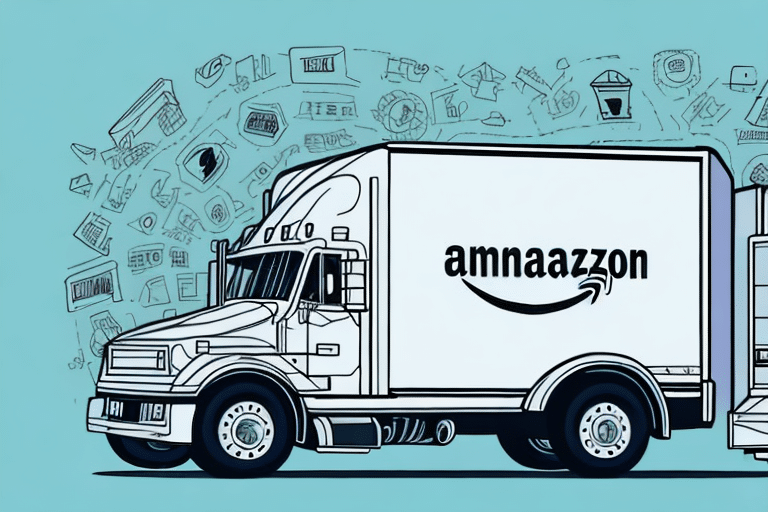The Evolution of Amazon's Shipping Industry
Amazon, the world’s largest online retailer, has revolutionized the shipping industry over the years. Starting as an online bookstore in 1994, Amazon has diversified and expanded its operations to include a wide array of products and services. This article explores the timeline of Amazon’s shipping industry evolution and the significant milestones achieved in reshaping the shipping sector.
Amazon’s Early Shipping Practices
When Amazon first started, it relied on established shipping carriers such as [UPS](https://www.ups.com/) and [FedEx](https://www.fedex.com/) to deliver books to customers. In 1997, Amazon opened its first fulfillment center, which stored products for third-party retailers, managed inventory, and handled direct customer shipments. Since then, Amazon’s fulfillment network has expanded significantly, boasting over 200 fulfillment centers worldwide as of 2023.
Introduction of Amazon Prime
In 2005, Amazon launched [Amazon Prime](https://www.amazon.com/prime), a subscription service offering free two-day shipping on eligible items. This initiative was a game-changer, encouraging customers to shop more frequently and increasing average order values. Today, Amazon Prime includes benefits like same-day and one-day delivery in select regions, setting new standards for customer expectations.
Technological Advancements in Amazon’s Shipping
Investment in Robotics and Automation
Amazon has heavily invested in robotics and automation to enhance efficiency within its fulfillment centers. The acquisition of [Kiva Systems](https://www.kiva.com/) in 2012 revolutionized warehouse operations by automating product retrieval and inventory management, significantly reducing processing times and operational costs.
Exploration of Drone Delivery
Through its [Prime Air](https://www.amazon.com/Amazon-Prime-Air/b?ie=UTF8&node=8037720011) initiative, Amazon is developing drone delivery systems aimed at delivering packages within 30 minutes or less using unmanned aerial vehicles. While regulatory approvals are still being sought in many regions, pilot programs have demonstrated the potential to reduce delivery times and operational expenses.
Impact on the Retail and Shipping Industries
Disruption of Traditional Retail Models
Amazon’s rapid delivery options and competitive pricing have forced traditional retailers to enhance their shipping practices to remain competitive. The surge in e-commerce, driven by Amazon’s shipping innovations, has led to significant shifts in consumer purchasing behaviors, resulting in a decline in foot traffic to brick-and-mortar stores.
Growth of E-commerce and Increased Shipping Demand
The convenience of online shopping combined with fast delivery options has fueled the growth of e-commerce. In 2022, global e-commerce sales surpassed [$5 trillion](https://www.statista.com/statistics/379046/worldwide-retail-e-commerce-sales/), with Amazon being a major contributor. This growth has heightened demand for shipping services, expanding the global logistics industry.
Environmental and Social Impacts of Amazon’s Shipping Practices
Environmental Concerns and Sustainability Initiatives
The increase in shipping volume has raised concerns about carbon emissions and packaging waste. Amazon has committed to achieving [net-zero carbon](https://sustainability.aboutamazon.com/about/sustainability) by 2040 through initiatives such as using electric delivery vehicles and implementing sustainable packaging solutions. Additionally, Amazon is investing in [renewable energy](https://aws.amazon.com/about-aws/sustainability/electricity/) to power its operations with 100% renewable energy by the same year.
Worker Treatment and Welfare
Amazon has faced criticism regarding working conditions in its fulfillment centers. Reports have highlighted concerns about worker welfare, prompting Amazon to implement measures to improve workplace safety, increase wages, and enhance employee benefits. The company has also introduced [employee feedback programs](https://www.aboutamazon.com/news/workplace/workplace-well-being), allowing workers to voice concerns and suggest improvements.
Strategic Partnerships and Expansion of Shipping Networks
Development of Amazon’s Own Delivery Network
To reduce reliance on third-party carriers, Amazon has developed its own delivery network, including [Amazon Flex](https://flex.amazon.com/), which allows individuals to deliver packages using their personal vehicles. This initiative has expanded Amazon’s delivery capabilities and increased flexibility in meeting delivery demands.
Expansion into Air Cargo and Partnerships with Aviation Industry
Amazon has established [Amazon Air](https://www.aboutamazon.com/about-us/amazon-air), a fleet of cargo planes that transport packages across the country, significantly enhancing delivery speed and reliability. Partnerships with major airlines and leasing additional aircraft have augmented Amazon Air’s capacity to handle growing shipping volumes.
Future Outlook of Amazon’s Shipping Industry
Advancements in Artificial Intelligence and Data Analytics
Amazon leverages artificial intelligence and data analytics to optimize shipping routes, predict demand, and manage inventory efficiently. These technologies enable real-time package tracking, enhancing transparency and customer satisfaction.
Continued Innovation and Expansion
Looking ahead, Amazon plans to continue investing in innovative shipping solutions, including expanding drone delivery programs and enhancing its logistics infrastructure. These efforts aim to further reduce delivery times, lower costs, and improve overall shipping efficiency. Amazon’s commitment to sustainability and customer-centric shipping practices will likely shape the future of the shipping industry.
Conclusion
Amazon’s shipping industry has undergone significant evolution, transforming the retail and logistics landscapes globally. Through continuous innovation, investment in technology, and strategic expansions, Amazon has set new standards for shipping and delivery. The company’s ongoing commitment to sustainability and customer satisfaction ensures that Amazon will remain a dominant force in the shipping industry, driving further advancements and shaping consumer expectations for years to come.






















